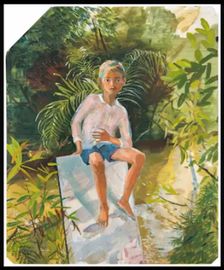Awards are more than momentary recognition. They can demand responsibility of the achiever whilst bestowing an honour. There are many important awards in the art world such as the Marcel Duchamp Prize in France or the Turner Prize in the UK. The latter, given by Tate Britain to celebrate contemporary visual art, was named after the legendary British artist J.M.W. Turner because he had wanted to establish a prize for young artists. The £25,000 prize money is considered a token amount given the prices for contemporary art. But the prize is a prestigious accolade in the international art world.
Similarly, the Artes Mundi (Latin: arts of the world) is an international biennial contemporary art exhibition and prize, held in Wales and organised by the eponymous arts charity. Mysuru-based artist N.S. Harsha was an early recipient (Artes Mundi 3 in 2008). In the UAE, The Abraaj Capital Art Prize worth up to $1 million divided among five artists from South Asia, North Africa and the Middle East has become an important benchmark. The Hugo Boss Prize, which is funded by the German lifestyle and menswear brand, annually collaborates with The Solomon R. Guggenheim Foundation for a solo exhibition at the Guggenheim Museum in New York. The Future Generation Art Prize, an international award funded by the Victor Pinchuk Foundation, gives up to $100,000 in cash and towards the production of a new work, plus up to $20,000 to fund artist-in-residency programmes for up to five ‘special prize’ winners. This level of patronage goes to show that prizes have become a big marketing strategy for brand building.
However, it is not all about huge prize money. The prestigious Golden Lion and Silver Lion at the Venice Biennale that honour the best national participation and the most promising artist carry little prize money. The BMW Art Journey enables the winning artist to go almost anywhere in the world to develop new ideas, find new themes and envision new projects. The seventh winner of the award is now on his journeys.
I was recently invited to be one of the jury members for the Signature Art Prize 2018, funded by the Asia Pacific Breweries Foundation and organised by the Singapore Art Museum. The other members of the jury were Mami Kataoka, chief curator, Mori Art Museum, Tokyo; Joyce Toh, head of content and senior curator, Singapore Art Museum; Gerard Vaughan, director, National Gallery of Australia, and Malaysian artist/politician Wong Hoy Cheong.
The prize is now a decade old. The inaugural edition of the triennial award in 2008 had 34 nominations from 12 countries. The fourth edition this year had 46 different countries and territories, with Central Asia being included for the first time. Jury members had to review 113 works and many more again on PowerPoint presentations in closed rooms. The artist and art works were nominated for the prize by 38 invited curators/artists from different regions and countries. After rigorous conversations and critical debate, we invited 15 projects. In fact, the jurors had to visit Singapore again to see the original exhibitions of 15 shortlisted entries at the National Museum.
Vietnamese artist Phan Thao Nguyen was finally awarded the Grand Prize—SGD60,000. Her poetic, regional story telling, including paintings and video, caught the jurors’ attention. Indian-Singaporean artist Shubigi Rao and Thailand’s Thasnai Sethaseree received the two Jurors’ Choice Awards, receiving SGD15,000 each. Indonesian narrative story painter Gede Mahendra Yasa received the People’s Choice Award worth SGD10,000. And, the Signature Art Prize—an important art award in Asia—completed another successful edition, brilliantly structured and executed by the Singapore Art Museum’s team at the National Museum of Singapore.
editor@theweek.in


